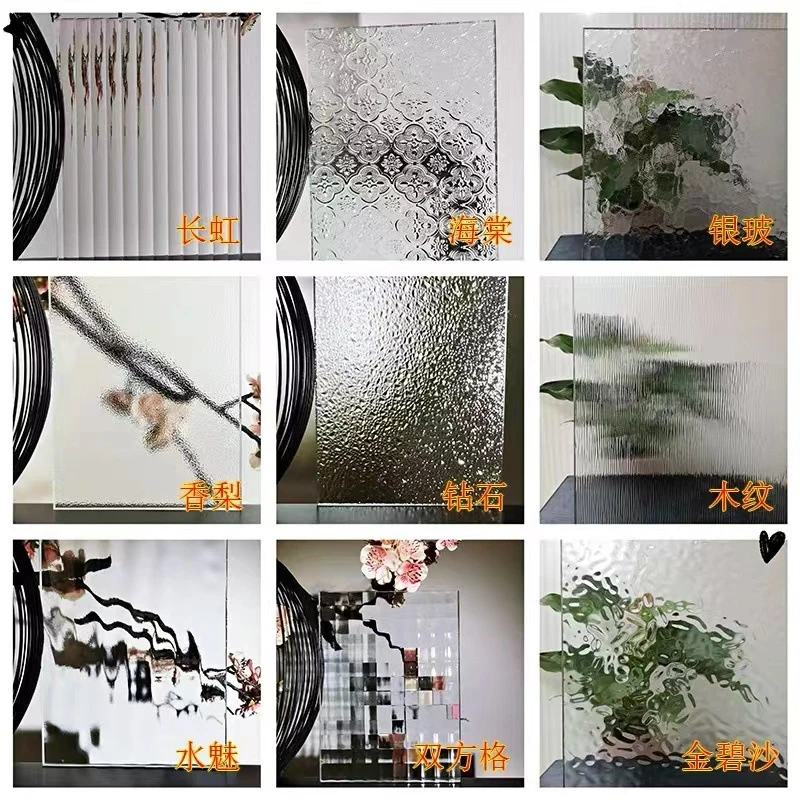Understanding Float Glass Definition, Properties, and Applications
Float glass, a term commonly encountered in the glazing and construction industries, refers to a type of flat glass that is produced using a unique manufacturing process known as the float method. This method, developed in the mid-20th century, has revolutionized the way glass is made, leading to a high-quality product that has become essential in a variety of applications.
What is Float Glass?
Float glass is created by melting raw materials such as silica sand, soda ash, and limestone at high temperatures, typically around 1,600 degrees Celsius (2,912 degrees Fahrenheit). Once the raw materials are melted into molten glass, it is floated on a bed of molten tin. This floating process allows the glass to spread evenly and results in a sheet that is smooth and flawless. The glass takes on the characteristics of the tin, creating a flat, uniform thickness and clear surface.
The defining feature of float glass is its superior optical quality. The process eliminates irregularities and imperfections that often plague other glass forms. As a result, float glass is nearly transparent, with minimal light distortion, making it an ideal choice for windows and other applications where clarity and aesthetics are paramount.
Properties of Float Glass
The unique production method endows float glass with several desirable properties
1. Clarity and Flatness Float glass is renowned for its incredible clarity and uniform surface. This quality makes it perfect for applications where transparency is crucial, such as in architecture and display cases.
2. Thickness Variation Float glass can be produced in a wide range of thicknesses, typically from 2mm to 19mm. This flexibility allows it to be used in diverse applications that require different strength and insulation properties.
3. Chemical Resistance Float glass exhibits a high degree of chemical resistance, making it suitable for environments where exposure to chemicals is a concern.
4. Thermal Resistance While not inherently heat-treated, float glass can withstand moderate temperature changes. There are also variations of float glass designed for enhanced thermal management, such as tempered glass.
float glass meaning
5. Recyclability Float glass can be recycled repeatedly without a loss in quality, making it an environmentally friendly material choice.
Applications of Float Glass
Float glass finds extensive use across various sectors due to its superior properties
1. Architecture It is predominantly used in the construction of buildings for windows, doors, and facades. The clear sightlines offered by float glass help create inviting and open spaces.
2. Automotive A form of float glass is used in car windows and windshields, where clarity and safety are essential.
3. Interior Design Float glass is used in mirrors, shelves, and decorative items. Its smooth surface and aesthetic appeal make it a popular choice in homes and commercial settings.
4. Display Cases and Aquariums The superior transparency of float glass ensures that objects displayed are enhanced rather than obscured, making it perfect for display cases in retail and galleries.
5. Solar Panels Float glass is also leveraged in the renewable energy sector for solar panel manufacturing due to its excellent light transmission properties.
Conclusion
Float glass has undoubtedly transformed the world of glass manufacturing, providing a product that not only meets the aesthetic demands of modern design but also addresses practical needs in durability and functionality. With its numerous applications spanning construction, automotive, and interior design, float glass continues to be a vital component in various industries. As technology advances, innovations within float glass production are likely to expand its applications even further, enhancing its role in sustainable development and energy efficiency in the architectural landscape. Understanding float glass, its properties, and its uses is essential for designers, builders, and consumers alike, fostering a greater appreciation for this remarkable material.
 Afrikaans
Afrikaans  Albanian
Albanian  Amharic
Amharic  Arabic
Arabic  Armenian
Armenian  Azerbaijani
Azerbaijani  Basque
Basque  Belarusian
Belarusian  Bengali
Bengali  Bosnian
Bosnian  Bulgarian
Bulgarian  Catalan
Catalan  Cebuano
Cebuano  Corsican
Corsican  Croatian
Croatian  Czech
Czech  Danish
Danish  Dutch
Dutch  English
English  Esperanto
Esperanto  Estonian
Estonian  Finnish
Finnish  French
French  Frisian
Frisian  Galician
Galician  Georgian
Georgian  German
German  Greek
Greek  Gujarati
Gujarati  Haitian Creole
Haitian Creole  hausa
hausa  hawaiian
hawaiian  Hebrew
Hebrew  Hindi
Hindi  Miao
Miao  Hungarian
Hungarian  Icelandic
Icelandic  igbo
igbo  Indonesian
Indonesian  irish
irish  Italian
Italian  Japanese
Japanese  Javanese
Javanese  Kannada
Kannada  kazakh
kazakh  Khmer
Khmer  Rwandese
Rwandese  Korean
Korean  Kurdish
Kurdish  Kyrgyz
Kyrgyz  Lao
Lao  Latin
Latin  Latvian
Latvian  Lithuanian
Lithuanian  Luxembourgish
Luxembourgish  Macedonian
Macedonian  Malgashi
Malgashi  Malay
Malay  Malayalam
Malayalam  Maltese
Maltese  Maori
Maori  Marathi
Marathi  Mongolian
Mongolian  Myanmar
Myanmar  Nepali
Nepali  Norwegian
Norwegian  Norwegian
Norwegian  Occitan
Occitan  Pashto
Pashto  Persian
Persian  Polish
Polish  Portuguese
Portuguese  Punjabi
Punjabi  Romanian
Romanian  Russian
Russian  Samoan
Samoan  Scottish Gaelic
Scottish Gaelic  Serbian
Serbian  Sesotho
Sesotho  Shona
Shona  Sindhi
Sindhi  Sinhala
Sinhala  Slovak
Slovak  Slovenian
Slovenian  Somali
Somali  Spanish
Spanish  Sundanese
Sundanese  Swahili
Swahili  Swedish
Swedish  Tagalog
Tagalog  Tajik
Tajik  Tamil
Tamil  Tatar
Tatar  Telugu
Telugu  Thai
Thai  Turkish
Turkish  Turkmen
Turkmen  Ukrainian
Ukrainian  Urdu
Urdu  Uighur
Uighur  Uzbek
Uzbek  Vietnamese
Vietnamese  Welsh
Welsh  Bantu
Bantu  Yiddish
Yiddish  Yoruba
Yoruba  Zulu
Zulu 

